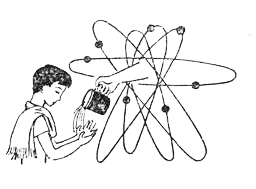The NUCLEARWATERS project invites you to our next seminar, scheduled for Tuesday 7 June at 15.15-17.00 CET (Stockholm Time). It will take place in hybrid format at the Division of History of Science, Technology and Environment (big seminar room) and via Zoom (https://kth-se.zoom.us/j/61154466603):
Stefan Guth, researcher at the Department of Eastern European History at Heidelberg University in Germany, will present his paper with the title “The Atom, the Human-Made River and the Radioactive Lake: Desalting and Degrading Water in Shevchenko/Aqtau, 1959-2019”. Afterwards, we will discuss the nuclear waters of Kazakhstan, the Soviet Union, and beyond.
Join us at KTH or online via Zoom! We are looking forward to a great discussion.

Abstract
Water often lives in the margins of affirmative narratives about nuclear energy, as an unglamorous ancillary resource used to cool reactors or process uranium before being disposed of. But this was not the case in the Soviet city of Shevchenko in Kazakhstan, whose nuclear complex combined uranium mining, nuclear energy generation and atomic-powered water desalination to great effect – facilitating what was touted domestically and abroad as a ‘nuclear oasis’ on the desertlike Eastern shore of the Caspian Sea.
Studying this highly selective sociotechnical imaginary alerts us to the deliberate sightedness and blindness of Soviet nuclear technopolitics, whereas analysing Shevchenko as an envirotechnical system reveals more complex and ambiguous entanglements of water and nuclear energy. While Shevchenko’s NPP fed a ‘human-made river’ of freshwater, its hydrometallurgical uranium-processing plant discharged a constant stream of liquid tailings into what became one of the world’s largest radioactive lakes by the end of the Soviet period. At the BN-350 fast breeder reactor, the hydraulic system had the potential to wreak havoc upon the nuclear part of the reactor, as the sodium-steam junction between the primary and the secondary cooling loops posed a hard-to-manage risk of explosions and fires. And while the Caspian Sea was an indispensable part of the NPP’s design, providing seawater for cooling and desalination, Soviet nuclear technologists had failed to account for the long-term sea level fluctuations for which the Caspian is known, and which threatened to inundate the expensive artefact in the late 1980s.
In my paper, I will argue that only by combining the study of imaginaries with the analysis of envirotechnical systems can we begin to understand both the short-term motivations of Soviet technologists and the long-term implications of their actions, thereby bridging the gap between the vastly different timescales of nuclear technologies and nuclear ecologies.

Illustration in an article on Shevchenko’s nuclear-powered water desalination plant in the children’s illustrated journal ‘Koster’, 1969